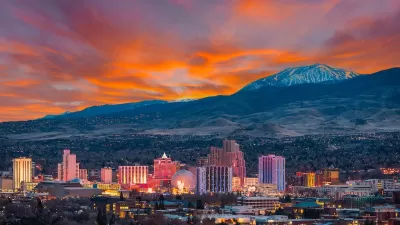A recent ruling that favored local homeowners over a developer in Houston had some wondering whether Houston's days as a "development free-for-all" were over. Fear not, says Stephen J. Smith.
Stephen J. Smith provides background about some of the legal and regulatory contexts in Houston, especially following a potentially precedent-setting decision in a recent lawsuit against the developers of a high-rise project known as the Ashby.
In the past, explains Smith, land use regulations in Houston induced sprawl, such as the sewer moratorium in 1974, which severely restricted development for a decade, as well as regulations that limited the types of townhouse construction popular with developers.
But when such restrictions are overturned, such as the anti-townhouse rules were in 1998, Houston's market and regulatory environments usually encourage density. "Since the minimum townhouse lot size has been dropped to 1,400 square feet, the attached houses have been popping up all over Houston’s inner-Loop. The townhouses are not always popular, with the treatment of their garages — each requires two parking spaces according to the city’s non-zoning code — coming in for most of the criticism. But despite their design defects, the attached homes are adding real density — filling in the holes in neighborhoods like Midtown, Montrose and beyond, and packing bodies within walking distance of shops, restaurants, light rail and frequent bus routes."
What does this mean for the recent decision in the Ashby case? "The Ashby high-rise case was a setback for the development industry, but not a fatal blow." In fact, says Smith, "Houston has become considerably more friendly to dense infill development, and will likely continue the trend."
FULL STORY: Sprawltastic Houston Is Densifying and the Courts Can’t Stop It

Trump Administration Could Effectively End Housing Voucher Program
Federal officials are eyeing major cuts to the Section 8 program that helps millions of low-income households pay rent.

Planetizen Federal Action Tracker
A weekly monitor of how Trump’s orders and actions are impacting planners and planning in America.

Ken Jennings Launches Transit Web Series
The Jeopardy champ wants you to ride public transit.

Crime Continues to Drop on Philly, San Francisco Transit Systems
SEPTA and BART both saw significant declines in violent crime in the first quarter of 2025.

How South LA Green Spaces Power Community Health and Hope
Green spaces like South L.A. Wetlands Park are helping South Los Angeles residents promote healthy lifestyles, build community, and advocate for improvements that reflect local needs in historically underserved neighborhoods.

Sacramento Plans ‘Quick-Build’ Road Safety Projects
The city wants to accelerate small-scale safety improvements that use low-cost equipment to make an impact at dangerous intersections.
Urban Design for Planners 1: Software Tools
This six-course series explores essential urban design concepts using open source software and equips planners with the tools they need to participate fully in the urban design process.
Planning for Universal Design
Learn the tools for implementing Universal Design in planning regulations.
Heyer Gruel & Associates PA
Ada County Highway District
Institute for Housing and Urban Development Studies (IHS)
City of Grandview
Harvard GSD Executive Education
Toledo-Lucas County Plan Commissions
Salt Lake City
NYU Wagner Graduate School of Public Service





























